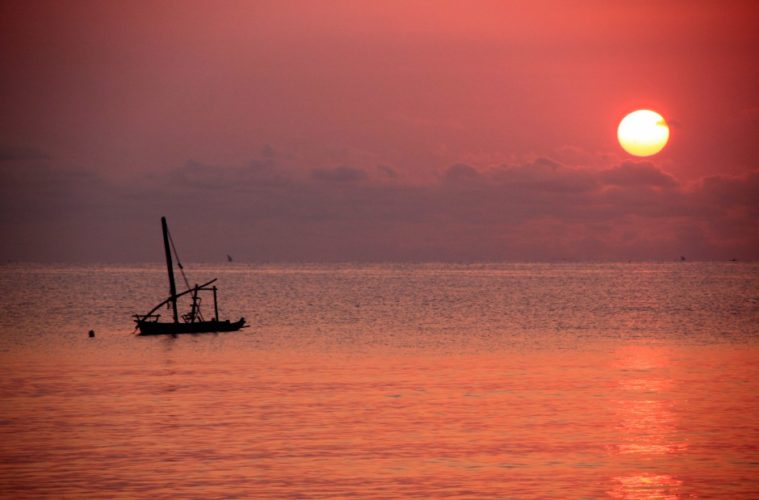It takes just a fifty minutes speed boat ride to reach the very beautiful Zanzibar island. Located off the coast of Tanzania in East Africa, Zanzibar comprises of many islands of which the two main ones are Pemba and the larger Unguja. The larger Unguja is commonly referred to as Zanzibar and the archipelago is a semi-autonomous part of Tanzania. Famous for some of Africa’s best coral beaches and a UNESCO World Heritage Site of Stone Town, Zanzibar is an exotically seductive honeymoon destination. The archipelago is blessed with some platinum blonde beaches and the island breeze tickles the nostrils with enchanting aromas emanating from its spice gardens.
Table of Contents
Zanzibar is also known as the enchanting Spice Island
Popularly known as the Spice Island, Zanzibar is the birthplace of the quirky genius, Freddie Mercury from the band Queen and his house is considered as one of the must-visit spots on the island. Zanzibar, however, is not just all about sugar, spice, and everything nice. The island has a dark, painful history which is stained with the trauma of slavery and Dr. Livingstone toiled tirelessly from here. With so much action and intrigue packed in one place, it is no wonder that I looked forward to Zanzibar and the island was a relaxing break from my overlanding Tanzania trip.
The Indian Ocean which separates Tanzania from Zanzibar
The short journey through the turquoise water of the Indian Ocean provided an amazing preview of the island and the sea was busy with endless traffic of local wooden boats called dhows. With their big white sails billowing against a huge blue sky, the dhows seemed dangerously overcrowded and beautiful curvaceous Zanzibar women in traditional Islamic garbs clung on to the wooden sides. Zanzibar is a predominantly Islamic island and many of its residents shuttled over the ocean twice daily for work at the mainland. Thus, there was a large crowd at the arrivals at the port as expected and I waited in the queue with other travelers amidst squalling families, beggars, noisy porters, and overzealous taxi drivers. Being a semi-autonomous region, all the foreign travelers entering Zanzibar have to go through the entire process of passport control along with checking of the Tanzanian arrival card and yellow fever certificate.
You may also like: Wildlife Safari at Ngorongoro Crater in Tanzania
Historic Stone Town is best enjoyed slow
Quite obviously, the island worked at its own pace and in the muggy tropical heat, the wait felt like forever. Thankfully, my hotel was close to the ferry terminal and it was located in a beautiful old building in the historic center of Stone Town. Complete with an ornately carved door, narrow wooden staircase, high vaulted ceiling, four-poster beds with gauzy white mosquito nets, and a gorgeous domed bathroom, the building was a typical Stone Town construction and after the afternoon heat, the white lime washed walls were cool to touch. My room, which I shared with a co-traveler from my overlanding group overlooked a narrow residential street and I enjoyed sitting at the arched open-air window to watch the Stone Town life pass by.
Suggested Read: Serengeti Wildlife Safari Photo Essay
Zanzibar is a lively cultural mix of nearly all continents
It was a great way to spend the afternoon when it was too hot to venture out and I loved how the white Stone Town shimmered lazily under my curious gaze. The historic area was very atmospheric and it consisted of a lively mixture of Arabic, African, Indian, and European influences. Constructed from coral stone during the 19th and 20th centuries (hence the name), Stone Town was declared as a World Heritage Site in 2000 and in my eyes, it was a very photogenic jumble of cobbled alleyways, old buildings, and local markets. Extremes ran high there and the alleys were too narrow for cars, the schools reverberated high-pitched children’s voices chanting Quranic verses, beautiful old mansions with overhanging latticework verandas cast cool shadows and men in traditional galabeyas slithered around. Zanzibar women in colourful hijab carrying baskets of produce on their heads added to the colour of the fresh produce markets and I must admit that the local islanders are one of the most good looking people I have ever seen.
Recommended Read: Tanzania travel itinerary
The mixed sounds, sights, tastes, and smells of Zanzibar
Their stunning looks are perhaps the result of the island’s hodgepodge cultural history and even the cuisine featured the same mixed ethnic influences. There are few places which are as heady and difficult to “not fall in love at first sight”, and Zanzibar got me hooked for life. It had a curious laidback island vibe which was streamlined with some straitlaced Islamic sensibilities and I loved how all the twists and turns of Stone Town led to the seafront. No matter, wherever I went, there was always the warm ocean breeze which coated my face with salt and the skies were always dazzling blue. In Zanzibar, the human sounds competed with natural noises and the cries of gulls mingled seamlessly with an omnipresent human murmur. Thus the sound of the island was mixed, just like the rest of its five senses and it seemed to get high or low according to the time of the day. During the mornings, the sound came in quick busy spurts, afternoons soothed into a soft, sleepy lull, and in the evening, it reached a crescendo with the floating notes of the imam’s prayer calls. The whole thing about Zanzibar was that it was too exotic to resist and I thoroughly enjoyed my stay at this iconic historic island. Though, the experience was peppered with equal doses of bad and ugly with the good, it was worth spending a week there. To know more about Zanzibar, check out the upcoming posts and don’t forget to subscribe to the newsletter.
RESPONSIBLE TRAVELING-BECAUSE I CARE







